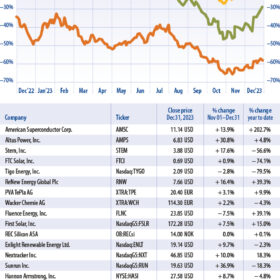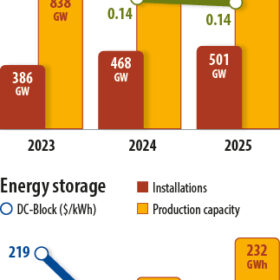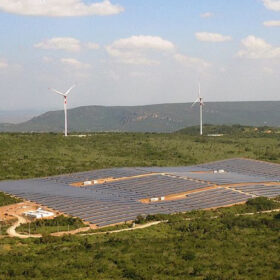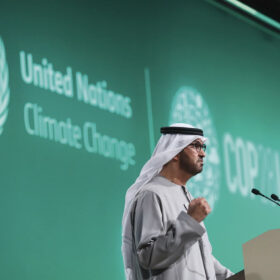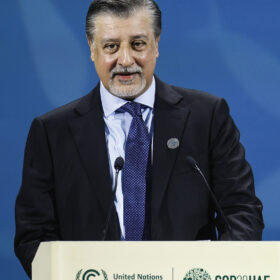A triple helping of uncertainty
The solar industry’s start to 2024 has been buoyed by discussions at the COP28 climate summit in December, leading to the broadly endorsed agreement that global renewable energy generation capacity must triple by 2030. The expectation that PV, as both the cheapest source of renewable energy and the fastest to deploy, will represent a […]
Year of decline ends on a rally
The Invesco Solar exchange-traded fund (ETF) (TAN) out-performed the Standard & Poor’s (S&P) 500 list of the biggest listed companies in the United States and the Dow Jones Industrial Average (DJIA) in December 2023. Jesse Pichel, of Roth Capital Partners, attributed the improvements to hedge fund action.
Germany waits on solar package
As the decline in solar panel prices looks set to stop soon, and conflicts in the Middle East drive up shipping costs, German installers could do with a shot in the arm from a delayed solar package in the Bundestag, writes Martin Schachinger, of pvXchange.
Oversupply could sink plans for EU solar
The plunge in solar panel prices caused by a global glut of PV products is threatening the European Union’s efforts to re-establish its own solar and energy storage manufacturing base.
Tracked changes
The need for greater supply chain traceability has pushed the PV industry to adapt, with new procedures to support documentation at each stage of manufacturing. Nicola Licata, of Clean Energy Associates (CEA), explains how evolving processes are preparing the PV industry to face future challenges.
A cell maker’s survival guide
With solar production capacity expansion plans paused, bigger cell makers will weather the storm through a revised approach to new panel technologies. InfoLink’s Alan Tu says that low profits could also drive innovation and cost savings, pushing the industry to new heights.
Entering the renewables era
Following strong global solar installation figures in 2023, Alexa Capital co-founder and partner Gerard Reid sees enormous potential for a renewables revolution.
The path beyond 5 TW
With the COP28 climate summit in Dubai resulting in a pledge of at least 11 TW of renewables generation capacity by 2030, Bruce Douglas, chief executive officer (CEO) of the Global Renewables Alliance (GRA), examines the outcomes of the conference and their likely impact on the solar industry.
COP: A solar flop?
Tripling clean energy generation capacity to 11 TW by 2030 was a leading pledge from the United Nations’ (UN) climate change conference in Dubai. With few details about infrastructure and energy storage and no clear PV targets, however, it is hard to judge the effectiveness of the 28th global Conference of the Parties (COP) meeting. Angela Skujins considers possible impacts for the solar industry.
Making history
Holding the leading global conference on climate change in the heart of oil and gas country was bound to attract criticism. However, the chief executive officer (CEO) of COP28, Adnan Z. Amin, has ample experience of advocating for renewables in the Gulf Cooperation Council (GCC) region. Amin spoke to pv magazine about the landmark outcomes from COP28 and the decisive role that solar will play.

